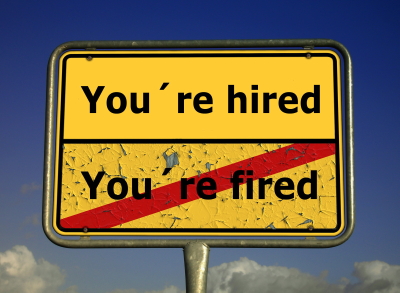Some years ago I was coaching a client who had won an international prize for excellence as a salesperson for a large pharmaceutical company. She was young, idealistic, impressionable, and sincerely devoted to her work. We’ll call her Jane.
Things changed for Jane very suddenly.

Achieving peak excellence opened new doors for her, including an invitation to a private audience with the global CEO. Until that time Jane had been Dorothy to his Wizard of Oz — he the mysterious figure behind the curtain, and she looking up to this heroic, mystical, never-seen figure.
Finally, the curtains parted. Jane was instructed to leave her phone, notepad and pen with the secretary. She ventured in, empty-handed.
The strategic and operational information Jane learned at that meeting shocked and sickened her so profoundly that she slipped into a kind of moral trauma. At the peak of her career, and within two weeks of this meeting, she had quit her high six-figure job.
Jane was well-intentioned, honourable, and, until those moments, innocent. Her role was, of course, filled by the next willing and capable person — someone for whom that strategic and operational information sat more comfortably.
With Jane’s departure, and as quick as a few keystrokes in the HR department, organisational evil had concentrated a little.
Here’s another example:
Shortly after Donald Trump took office several worthy public servants quit. Some left like smart rats scurrying at the first sign of water in the hull; others in a grand gesture of moral protest.
Right there, the process of the concentration of evil began.
I use “evil” loosely here, as a label for the continuum that begins with unhealthy, progresses through damaging or toxic, and only hits true evil at its extreme. I’m talking about behaviour that harms others, like corruption, greed, misogyny, bullying and environmental insouciance.
This is my core postulate:
Natural forces cause the culture of a business or political organisation to become increasingly evil over time, unless specific preventative are actions are taken.
How evil happens
There are two conditions required for evil to take hold:
- Avoidance by non-evil leaders of the uncomfortable task of re-directing people who do not embrace constructive values, either into low impact roles or out of the organisation.
- Departure of non-evil personnel. This happens organically across time, at an exponential rate proportionate to the increasing concentration of evil.

I have seen an organisation dramatically underperform because of a CEO’s avoidance of the need to remove just one highly destructive person in a key role. A long string of half-hearted efforts to bring good people in to work over or around this person had failed in the same way each time.
I have also seen businesses suffering deeply because the leader was the one with the destructive behaviour. The only staff who remained were so demoralised that they had lost any sense of their own power to pursue other options. Like abused animals, so used to being in a cage, they didn’t run even when the door was left open.
If the unsavoury elements in an institution are ignored, your very best people will leave in pursuit of a nicer life.
As good staff are replaced, every now and again a new recruit will find themselves right at home in this unsavoury environment, due to shared values. So they stay and evil concentrates.
Eventually, after many rounds of this, no reasonable person can tolerate the environment. The toxic culture has become a caricature.
Here are two examples:
Mia Freedman, founder of Mamamia and a capable and dynamic executive, described her brief experience with Australian broadcaster Channel Nine as “a culture so toxic and so bad for women that it was the most distressing career experience of my life”. [Channel Nine Boys’ Club. Mamamia.]
The culture at Channel Nine had come to my professional attention some years earlier. What Mia described suggested that little had changed, except for a worsening. Apparently, evil had been concentrating.
An ethical and informed person would require heroic resilience to take on a role at Monsanto these days, a poster child for corporate evil. The concentration of poor ethics appears overwhelming. [Monsanto Faces Blowback Over Cancer Cover-Up. Der Spiegel.]
How to change an unhealthy culture
Changing a negative culture in a team or business, before it’s too far gone, is actually a relatively straightforward task. It has just two steps:
- Identify the people causing most of the damage to morale, work quality, safety or reputation. Redirect them into roles that fit them better, or in cases of overtly unacceptable conduct just remove them.
- Recruit capable, energetic, pleasant and ethical people into key roles, to add critical mass in the opposite, constructive direction.

Although a popular alternative strategy, cultures rarely change only by coaching very badly behaved adults to behave better.
Whilst this certainly can work — I have had some memorable successes coaching lynchpin individuals, especially divisional bosses — this approach requires patience with human nature and the willingness to travel a bumpy road.
Sometimes better for all concerned is cultural transformation through careful removal of the small number of staff who are injecting the negative energy, and replacing them with those whose skills and personalities epitomise the culture you want to create.
Enough of the right people in key roles will, all by themselves, build 90% of the culture you aspire to for your business — and with surprising speed.
A CEO client of mine described the results of this process as “a breath of fresh air”. The work environment felt so transformed, he said, that “It’s like walking into a different business in the morning”.
Actually, there is a third piece.
I and the CEO did something very important first — we workshopped the culture he wanted to create, including the behaviours and skills that would drive it. It’s important to invest in carefully articulating the culture you want, so that you know precisely who to recruit.
From there it’s all about building a critical mass of the right people. Employ enough proactive, friendly, enthusiastic people, and your culture will become proactive, friendly and enthusiastic. It’s a simple principle, though does require some technical recruitment know-how.
A warning:
Employ too few of the ‘new culture’ staff, below the critical mass required for their energy to dominate the team — or recruit them too slowly — and the intervention will fail.
If the environment is still dominated by a weight of old negative energy, your new whizz-kids will feel out of place and uneasy. They will falter or leave instead of transforming your organisation.
But done right, cultural transformation by critical mass works in any team or group. Doing it right requires groundwork, sophisticated recruitment techniques, guts and quick execution.
Evil rises to the top, like fat on milk
If you don’t manage your team or institution in this way, the unsavoury elements will work their way up the hierarchy.
As soon as a toxic person lands in the boss’s chair the culture is doomed, because there is no stronger driver of organisational culture than the leader.
They will recruit in alignment with their values, and reward and punish in alignment with their values.
Good people who push back on bad behaviour by such a boss will find themselves unrewarded, then sidelined, then unemployed. They will be replaced by someone who will play ball, and evil will concentrate.
Once a negative culture has taken shape, great inertia is created by the critical mass of people behaving badly. By the time evil has concentrated to this degree, it’s nigh impossible for a good-natured outlier to survive in that environment, let alone have a measurable positive impact.
So they leave, or get booted, and evil concentrates a little more.
The remedy for concentrated evil

The cure for over-concentration is effective dilution.
If your drink is much too sweet, how effective is it to add an extra 1cm of water? No detectable difference, right? So you pour out the top third and fill it with fresh water. Now we’re talking.
Remove. Replace. Adjust the critical mass.
Which brings me back, sadly, to Donald Trump.
The current US political situation is the most disturbing case study of the process of rapid concentration of evil that I have witnessed.
US Government staff have been quitting en masse. Many have also been kicked out.
First, some good people left. Others stayed to get the job done, but then some of those got booted too. Witnessing this unfolding madness, increasing numbers of good staff have been leaving.
Who will this leave in place???
The ranks are filling with people who are willing to comply with poor ethics, or who are incompetent but thrilled to take up opportunities that their inadequate skill sets would never ordinarily afford them.
The critical mass of good people is dangerously dwindling. The scale could tip any day, if it hasn’t already.
It’s often said that all that’s required for evil to prevail is for good men to do nothing. But in truth, evil, eventually, will prevail unless enough good people do the right thing.
.
Admiring the hard work you put into your site and detailed information you offer.
It’s great to come across a blog every once in a while that isn’t the same old rehashed material.
Excellent read!
Thanks for your comment. By cooincidence, I just re-read this article myself yesterday. I feel quite disturbed by how successfully it has predicted actual events. The concentration of evil in US politics is at an almost comical extreme now – a caricature of this process. If only the situation were not so serious.